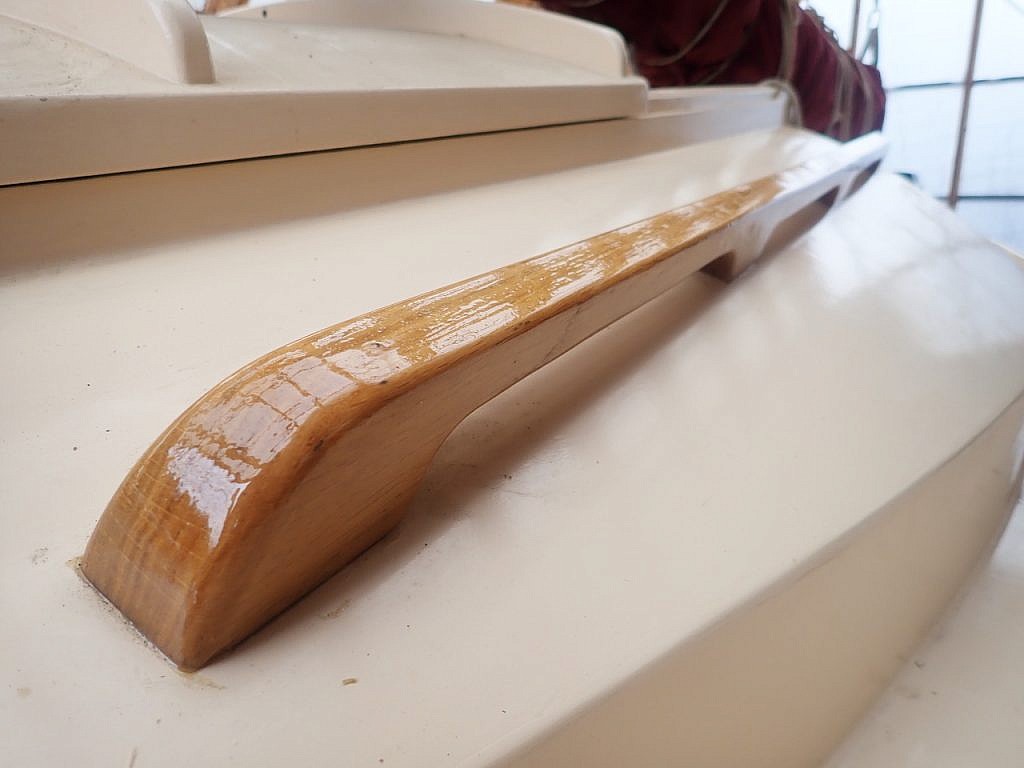
by Scott Sadil
While we’re on the subject of winter chores: Need I remind anybody that it’s never too early in the year to begin thinking about and, if weather permits, attending to boat projects—repairs, maintencance, or enhancements—that we promised ourselves we would tackle when, last season, we were still at the helm of old Lady Luck.
Make no mistake, I’m not talking here about New Year’s resolutions which, studies show, are all but certain to fail. Instead, boat owners and captains readily accept responsibility for the well-being of their precious vessels, no matter how humble they may be, recognizing without question the timeless adage that if you take care of your boat, she’ll take care of you.
The first order of business, especially if you live where temperatures, this time of year, sink near or below the freezing mark, might be nothing more complicated than checking on supplies and making sure, when the weather warms, you’re ready to go. Paint and varnish and even oil for the floorboards, we all know, have a way of turning to crud since last we opened a can. Start the list and make your order now, recalling, if you can, how much you enjoy working with the new stuff, how easy it is to apply, how smoothly it flows, leaving behind an elegant finish that makes both you and your boat happier by the coat.

Besides the other supplies on your list—sandpaper, paint filters, tack cloths, thinner, clean cotton rags—you might also want to consider, if you don’t own a couple already, splurging for a high-end brush or two, a two-inch badger hair oval brush for varnish, say, and maybe a one-inch, long-handled sable hair “artist” brush for detailed touch-up work.
And if you do indulge in fine natural-hair brushes, especially for varnish, by all means store them, after use and cleaning, suspended in a bath of diesel fuel, which will keep that good hair saturated, plump, and supple, resistant to the sort of breakage that leads to your work looking as though you trimmed your beard over a bowl of bread dough.

Do I also need to point out to anyone that since I’m talking here about boats, I assume everyone knows I’m referring to the use of oil-based products?
I refuse to discuss any so-called options—beyond, perhaps, slapping on a coat of water-based, anti-foul bottom paint, for which, I suppose, any plastic-bristled brush would do.
What else is on the To-Do List? Besides those of us restricted to driftboats, canoes, layout duck boats, truck-bed prams or the like—or knuckleheads like yours truly who for years favored open row-and-sail vessels without motors—most boaters, especially anglers, have some sort of engine that needs regular off-season maintenance. Tamalita, my newest boat, is just big enough that I can’t rely on oars to handle her in any but the quietest, calmest of conditions, which means that I, too, now have to fuss with an engine, a job that often sends me into a cold sweat—the reason, I suppose, I’ve avoided boats needing an engine in the past.

The good news is that Mercury now makes a lightweight, four-stroke, five-horse propane engine for sailboaters like me who suffer from an aversion to typical outboards. Or maybe we just can’t stand the thought of soiling our pretty boats with a tank of smelly fuel. I might have chosen an electric motor for the job but, where I live, there aren’t yet dealers for such engines, and certainly no mechanics to service electric boat engines, either.
Even better news, as far as I’m concerned, is that to date I’ve needed to run the Mercury just long enough to break it in, which means, so far, the only winter “maintenance” I perform is mounting the engine on Tamalita’s transom, checking the oil, and then running it in a trash can filled with fresh water from the garden hose.
And this year’s repairs and enhancements? I won’t go into the split in the side of the centerboard trunk, other than to say that’s exactly the kind of thing that can happen when you deviate from the designer’s drawings. An easy fix; one more coat of paint and no one will be the wiser. In the so-called galley—a ninety-degree turn, without changing your seat, from the very un-private head—a couple of well-placed sticks of varnished oak now provide a spot to stash cooking utensils and, maybe, a folded chart or two.

Still no genuine bookshelf at the forward foot of the berth, but time is growing short. I’m planning to sail again with the grey whales in Magdalena Bay; I need to depart within a month or so if I hope to arrive before the mothers and their calves leave the bay and start north for Alaska.
The thing about boats, of course, is there’s never quite enough time to get everything done.
If you did, you’d never use them.
Gray’s angling editor Scott Sadil is rumored to have been talking lately about the possibility of building a genuine power skiff.
